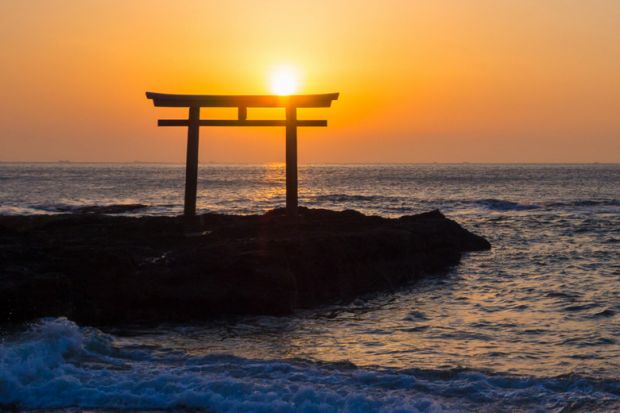This book makes admirably plain the resentful, troublesome and sometimes dangerous relations between China and Japan from as early as the 7th century AD. June Teufel Dreyer, professor of political science at the University of Miami, historian and US government policy adviser, surveys centuries of Sino-Japanese relations and underlines one big thing: how each culture and later nation took turns dominating and scorning, and occasionally learning from, the other.
Each frequently regarded the other as inferior. There are moments of absurdity, as when Japanese archaeologists discovered 12,000-year-old fragments of an ancient culture that “proved” that Japan was once as great a civilisation as China. There have been Sino-Japanese wars, with atrocities real and exaggerated on both sides, and even today collisions occur between China and Japan in neighbouring and distant seas. Nowadays, such conflicts between countries are usually smoothed over; between China and Japan, however, they risk becoming flashpoints for regional war. Fortunately, at many times, on both sides, reasonable statesmen and scholars have striven to keep relations if not calm, at least capable of cautious discussion.
Dignity and hurt feelings occasionally give way to honesty. Although for centuries, and even to this day, many Chinese have referred to Japan as “the country of dwarfs”, from the middle of the 19th century, as Manchu China slid into disorder and economic chaos, there were Chinese reformers, “tinged with envy”, who conceded that there was much to learn from their modernising neighbour.
Some went there to study. In 1895, during the proceedings leading to the Treaty of Shimonoseki – which concluded a humiliating defeat for China that rankles to this day, and in the process rearranged significant parts of East Asia in terms favourable to Japan – a “brilliant” Chinese translator of Japanese, who years before had been a fellow student of the man who had since become Japanese premier, explained to his old friend what had happened: “You see, in our younger days we knew each other as fellow students, and now you are prime minister in your country, and I am an interpreter in mine.”
But as Dreyer, ever adroit at finding the perfect quote, shows, even at that moment of defeat, a Chinese scholar-official remarked: “The island barbarian Japanese have inscrutable temperaments and petty dispositions. Their hearts are like those of jackals and wolves, and they possess poisons like the bees and the scorpions.”
This view remains widely held. Japanese atrocities during the course of the Second World War are toxic memories, which, if denied or inadequately conceded as atrocities by Tokyo, are still likely to cause hundreds of Chinese students to pour into the streets, even in Japan. There is a similar reaction whenever Japanese officials visit a shrine to soldiers who died in battle, some of whom can be called “war criminals”, even though the Japanese argue, with some justification, that at the time there was no concept of war crimes.
Similarly, if Japanese officials or ordinary citizens, as Dreyer writes, carefully criticise Chinese actions in Tibet, or even the Tiananmen massacre – which is oddly described in this book as an “incident”, in accordance with the official terminology of the Chinese Communist Party – there is immediate official Chinese displeasure, and the usual official Japanese reaction is a withdrawal, as Dreyer shows in this indispensable study of some of the world’s longest-lived scenes of rivalry, resentment, grumpiness and occasional violence.
Jonathan Mirsky was formerly associate professor of Chinese, history and comparative literature at Dartmouth College in the US, and former Far East editor of The Times.
Middle Kingdom and Empire of the Rising Sun: Sino-Japanese Relations, Past and Present
By June Teufel Dreyer
Oxford University Press, 472pp, £22.99
ISBN 9780195375664
Published 1 August 2016
Register to continue
Why register?
- Registration is free and only takes a moment
- Once registered, you can read 3 articles a month
- Sign up for our newsletter
Subscribe
Or subscribe for unlimited access to:
- Unlimited access to news, views, insights & reviews
- Digital editions
- Digital access to THE’s university and college rankings analysis
Already registered or a current subscriber? Login




